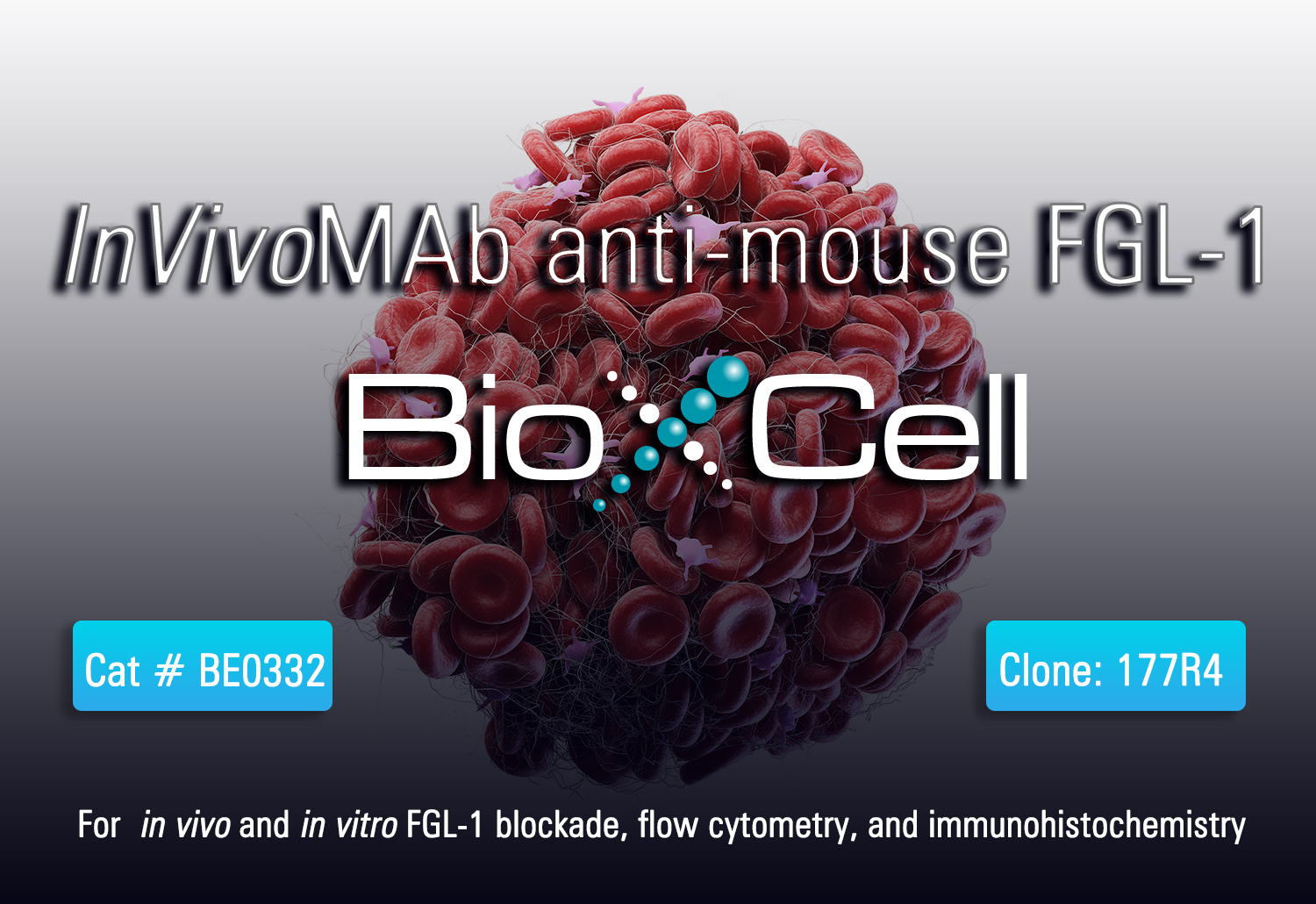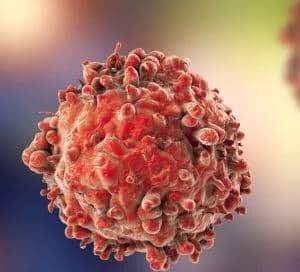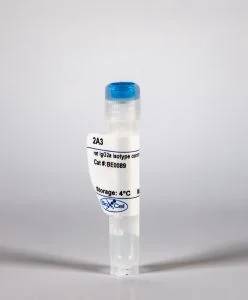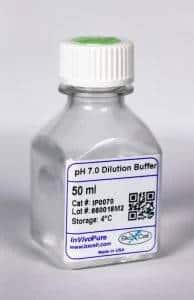MAb anti-mouse FGL-1 (Clone: 177R4)

InVivoMAb anti-mouse FGL-1
The 177R4 monoclonal antibody reacts with mouse Fibrinogen-like protein 1 (FGL-1). FGL-1 is a member of the fibrinogen family of proteins. Under normal physiological conditions, FGL-1 is primarily secreted from hepatocytes and contributes to mitogenic and metabolic functions. FGL-1 is produced at high levels in various tumors including lung cancer and melanoma. High FGL-1 expression is associated with resistance to anti-PD-1/PD-L1 therapy and poor prognosis of cancer patients. Recently, FGL-1 has been identified as a major inhibitory ligand for LAG-3, a receptor that negatively regulates the proliferation, activation, and effector function of T cells. In murine cancer models, the 177R4 clone has been shown to block FGL-1 binding to LAG-3 resulting in boosted T cell activity and slowed tumor growth.

Learn how researchers are using 177R4
A major ligand for the inhibitory receptor LAG-3 has been identified and its blockade can potentiate anti-tumor T cell responses read more...
This Antibody Is Useful For:
- in vivo FGL-1 blockade
- in vitro FGL-1 blockade
- Flow cytometry
- Immunohistochemistry (paraffin)
As always Bio X Cell antibodies are specifically formulated for in vivo use and feature:
- 95% purity
- Ultra-low endotoxin levels
- Preservative, stabilizer, and carrier protein-free
Recommended Control and Buffer:
InVivoMAb rat IgG2a isotype control, anti-trinitrophenol
The 2A3 monoclonal antibody reacts with trinitrophenol. Because trinitrophenol is not expressed by mammals this antibody is ideal for use as an isotype-matched control for rat IgG2a antibodies in most in vivo and in vitro applications.
InVivoPure pH 7.0 Dilution Buffer
InVivoPure™ dilution buffers are specifically formulated and tested to satisfy the stringent requirements for in vivo applications. They are extremely low in endotoxin, have been screened for murine pathogens, tested in animal models for toxicity and are formulated with respect to buffer composition and pH to satisfy the requirements of Bio X Cell’s antibodies.


